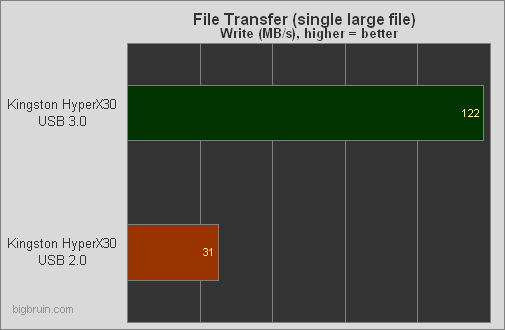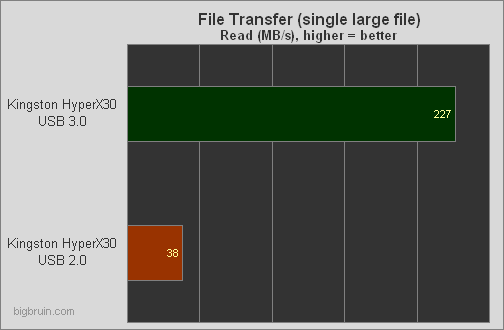Testing (continued):
Real-World File Transfers:
Typically USB flash drives are used to store many smaller files (word documents, presentations, and images) or massive files such as disc ISOs or DVDs. To simulate these two conditions we measured how long it took using a stopwatch to complete read and write transfers between the test system's 3GB/s SATA II SSD and the Kingston DataTraveler HyperX 64GB USB 3.0 flash drive. The test system was restarted after each test to ensure data was not cached and artificially inflating the test results. USB 2.0 results were not expected to exceed ~30MB/s due to read/write due to the bottleneck of the architecture. USB 3.0 devices are eventually expected to transfer at speeds exceeding 400MB/s and therefore will not bottleneck the tested flash drive performance.
Single Large File - Write Performance:
This test involved measuring the time to transfer a single 0.98GB ZIP file between the test system's 3Gbps SATA II drive and the flash drive. The average transfer rate was than calculated using this data and is provided in the below chart. Results show the Kingston DataTraveler HyperX 3.0 achieved average write speeds 10% slower than the rated speed of 135Mb/s. Still, this means transferring a 1GB file takes only ten seconds. Try doing that with any other flash drive.

Single Large File - Read Performance:
Average read performance was even better. To read the same 1GB file off the flash drive took less than six seconds. This works out to transfer rates of 227MB/s, slightly higher than Kingston's 225MB/s quoted transfer rate.
